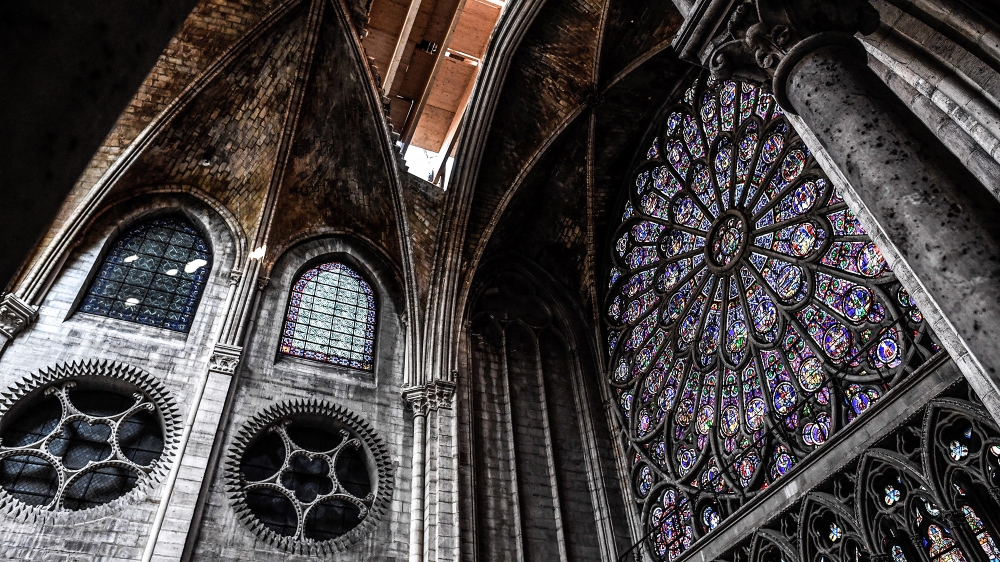Notre Dame rector: Fragile cathedral might not be saved
Rector says Paris landmark is so fragile that there is a ’50 percent chance’ the structure may not be saved.

The rector of Notre Dame Cathedral says the Paris landmark is still so fragile that there is a “50 percent chance” the structure might not be saved because scaffolding installed before this year’s fire is threatening the vaults of the Gothic monument.
Monsignor Patrick Chauvet said restoration work is not likely to begin until 2021 – and described his “heartache” that Notre Dame could not hold Christmas services this year, for the first time since the French Revolution.
“Today it is not out of danger,” he told The Associated Press news agency on the sidelines of Christmas Eve midnight mass in a nearby church.
“It will be out of danger when we take out the remaining scaffolding,” he added. “Today we can say that there is maybe a 50 percent chance that it will be saved. There is also 50 percent chance of scaffolding falling onto the three vaults, so as you can see the building is still very fragile.”
The 12th-century cathedral was under renovation at the time of the accidental April fire, which destroyed its roof and collapsed its spire. With no more roof to keep the enormous stone structure stable, the cathedral’s surviving vaults are crucial to keep it standing, but they are vulnerable.
Some 50,000 tubes of scaffolding crisscrossed the back of the edifice at the time of the fire, and some were damaged. Removing them without causing further problems is one of the toughest parts of the cleanup effort.
“We need to remove completely the scaffolding in order to make the building safe, so in 2021 we will probably start the restoration of the cathedral,” Chauvet said. “Once the scaffolding is removed we need to assess the state of the cathedral, the quantity of stones to be removed and replaced.”
Realistic timeframe
Chauvet estimated it would take another three years after that to make it safe enough for people to re-enter the cathedral, but that the full restoration will take longer. President Emmanuel Macron has said he wants it rebuilt by 2024, when Paris hosts the Olympics, but experts have questioned whether that timeframe is realistic.
Another reason it is still too dangerous to host religious services inside Notre Dame: the fire released tonnes of toxic lead dust, and authorities are working to clean it up and assess related health risks.

Notre Dame’s symbolism reaches far and wide. Church officials estimated two million people from around the world visited the cathedral during the holiday season.
Tourists can photograph it from nearby embankments, but they can no longer hear its organs or get a close view of its stone carvings and masterpiece rose windows. The vast forecourt is barricaded, barren of its Christmas tree.
But its congregation, clergy and choir are keeping its spirit alive, and decamped Christmas celebrations to the Saint-Germain l’Auxerrois Church across from the Louvre Museum instead.
Parishioners shared sorrow about the fire, but also a feeling of solidarity.
“I remember my mother told me that she was watching TV, and that there was a fire at Notre Dame. I told her ‘it’s not possible’ and I took my bike, and when I arrived I was crying,” said Jean-Luc Bodam, a Parisian engineer who used to cross town to attend services at the cathedral.
“We are French, we are going to try to rebuild Notre Dame as it was before, because it is a symbol,” he said.